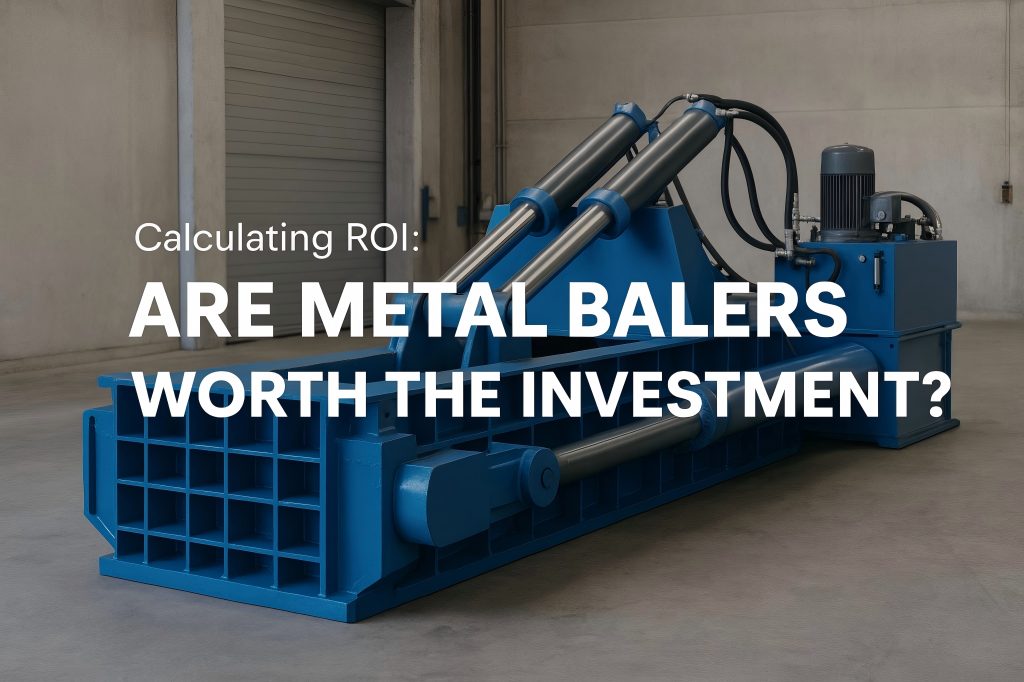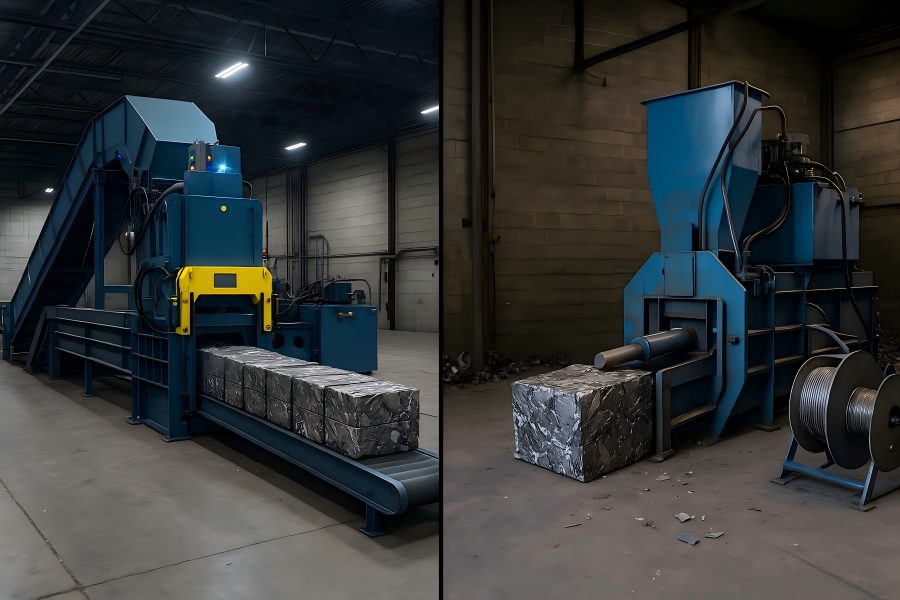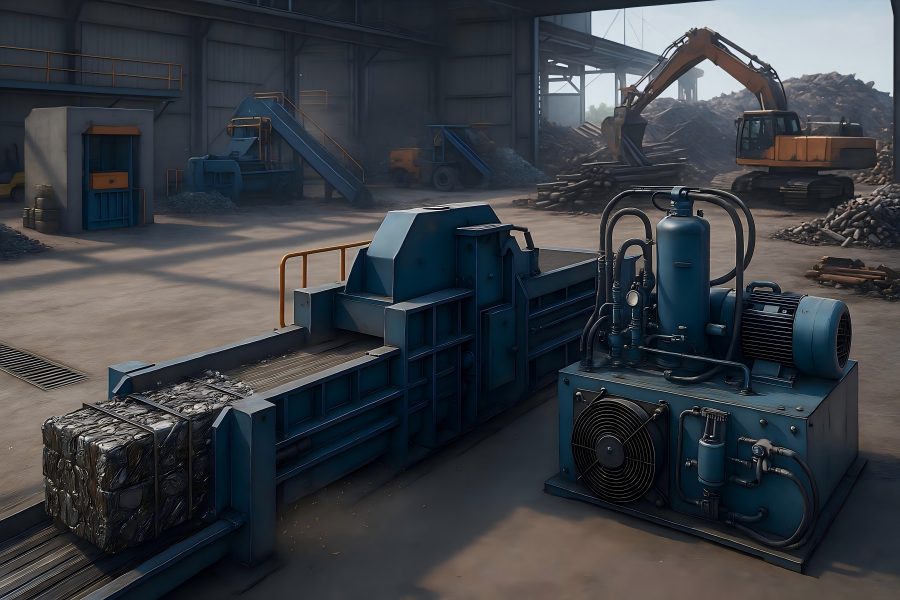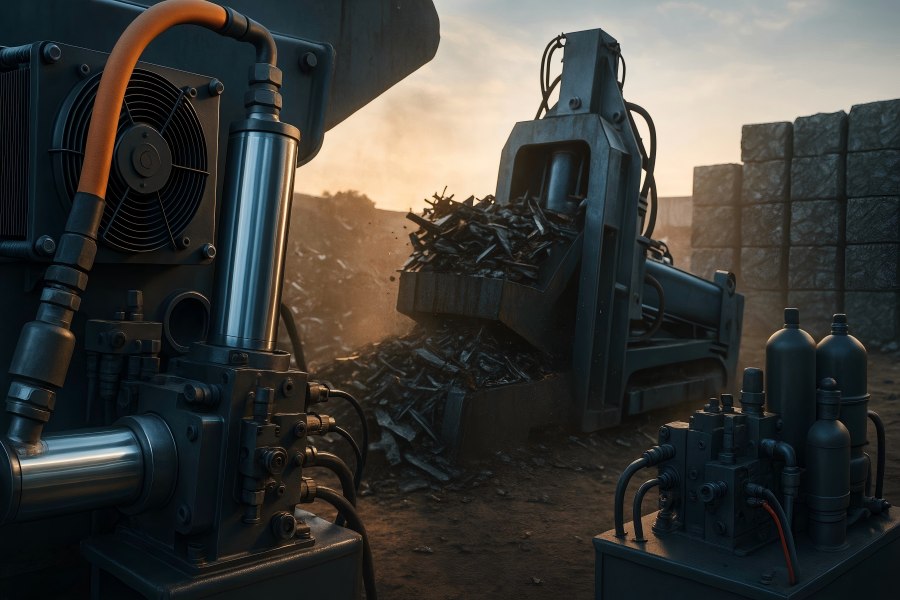Metal balers are a powerful tool for modern scrap and recycling operations. But are they worth the upfront cost? Making a wise business decision begins with knowing the return on investment (ROI).
Understanding Metal Balers: Purpose and Function
Metal balers compress scrap metals like aluminum, copper, steel, and stainless steel into compact, manageable bales. They are widely used in scrap yards, recycling centers, and metal processing plants to improve handling, save space, and increase scrap value.
Available in horizontal, vertical, and two-ram types, balers suit different materials and processing volumes. They all have the same goal, which is to reduce scrap mass for simpler logistics, whether they are fully automated, semi-automated, or manual.
The compressed bales help maximize storage, simplify transport, and lower costs. For high-volume operations, balers turn storage challenges into profit and prepare scrap for further processing.
Initial Investment Costs: What to Expect Upfront
Metal balers can require a significant upfront investment, with prices varying widely based on size, automation level, and production capacity. Small vertical balers can start at around $15,000 to $30,000, while larger horizontal or two-ram systems can exceed $300,000 or more.
Several cost components should be considered:
- Base Equipment Price: The core price of the baler itself.
- Installation and Commissioning: Often an additional 10–15% of equipment cost.
- Site Preparation: Includes electrical setup, reinforced flooring, safety systems, and space allocation.
- Training: Specific training may be necessary for operators and maintenance staff.
- Shipping: Depending on location, transportation may add several thousand dollars.
Companies often overlook the hidden costs associated with procurement, including time spent on procurement evaluations, integration with existing systems, and the opportunity cost of operational downtime during installation. For businesses without existing baling infrastructure, these add-ons can inflate total initial investment significantly.
However, many suppliers offer financing options, lease-to-own models, or government grants (especially in sustainable industries), which can help distribute the capital expenditure over time.
Operating Costs Over Time: Energy, Labor, and Maintenance
Long-term running expenses are crucial to ROI estimates, even after the original investment.
These include:
- Energy Consumption: Larger balers with hydraulic systems consume more electricity, especially when running 24/7. Even though they may cost more up front, energy-efficient versions save a significant amount of money over time.
- Labor Costs: Manual or semi-automatic balers require more labor input. Fully automatic models reduce labor costs but may require skilled operators or more advanced maintenance routines.
- Maintenance and Repairs: Regular servicing—such as hydraulic fluid replacement, piston checks, and part replacements—is essential. Planned maintenance contracts can run 5–10% of the machine’s value per year.
- Consumables: Wire, straps, or bindings for securing bales are recurring costs.
- Downtime Costs: Equipment breakdowns can lead to lost production hours and potentially missed sales opportunities.
Total cost of ownership (TCO) models that include these recurring expenses are a more accurate reflection of ROI than purchase price alone. A low-cost baler may turn out to be more expensive in the long run if it has high downtime or inefficient processing.
Revenue Boost: How Baling Enhances Scrap Value
The potential to fetch better rates for processed scrap is among the strongest arguments for purchasing a baler. Recyclers and smelters are often willing to pay more for compacted, contamination-free bales than for loose scrap.
Here’s why baling increases revenue potential:
- Density Equals Dollars: Compact bales reduce air and space in shipments, allowing more metal to be transported per load.
- Improved Quality Control: Baled materials are easier to sort and store, reducing the risk of cross-contamination and increasing the market value.
- Preferred by Buyers: Many buyers, especially international ones, require scrap to meet density and form standards—baled scrap is often a prerequisite for export.
- Reduced Theft and Loss: Loose scrap is vulnerable to loss or theft. Bales are harder to steal, trackable, and easier to inventory.
In some markets, the price difference between baled and loose scrap can be $30 to $100 per ton—a difference that quickly adds up over hundreds or thousands of tons processed annually.
Labor and Time Savings from Automation
Labor costs are rising globally, and the ability to do more with fewer workers is crucial for maintaining profit margins. This is where the automation of baling processes brings strong ROI.
Manual loading, compressing, and binding are not only labor-intensive but also expose operators to safety risks. Modern balers offer automation features that significantly reduce operator involvement:
- Conveyor Feeding Systems
- Automatic Cycle Start/Stop
- Touchscreen PLC Control Panels
- Remote Monitoring and Diagnostics
A fully automated baler can often be run by a single operator monitoring multiple machines, whereas older systems may require a dedicated team. Over time, the reduction in man-hours alone can justify the baler’s capital investment.
More efficient operation also translates to faster throughput. A machine that compresses scrap in 30 seconds rather than 3 minutes allows for higher processing volumes per shift, unlocking greater profitability.
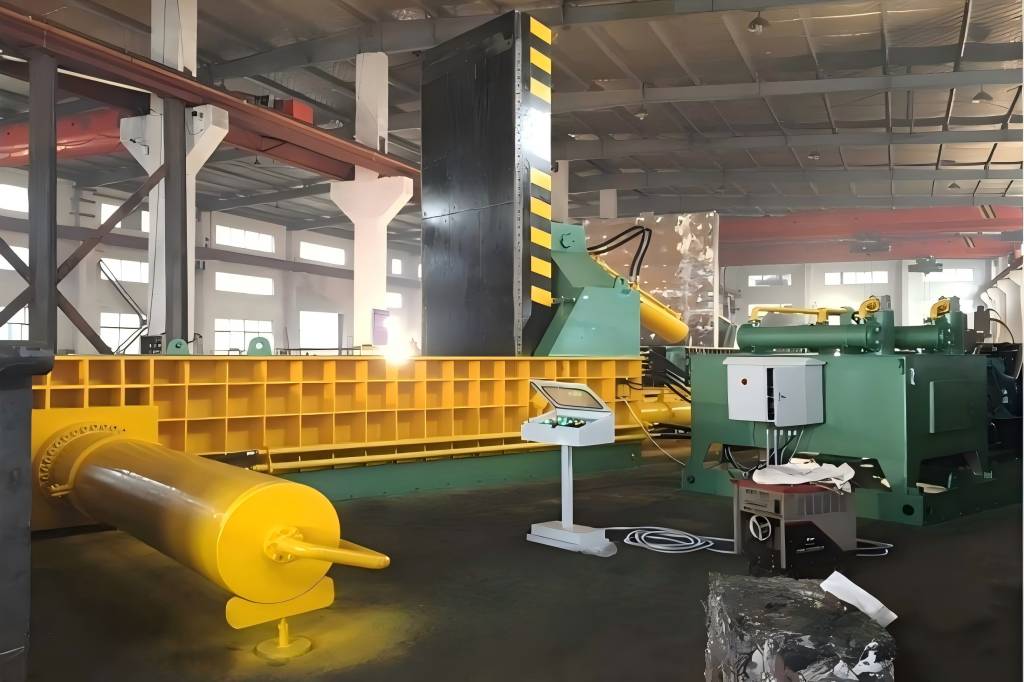
Space Optimization and Transportation Efficiency
In scrap yards and industrial facilities, space is money. Every square foot used to store loose scrap could be used for processing, logistics, or other revenue-generating activities. Balers dramatically reduce the footprint of stored scrap:
- Volume Reduction: Depending on material, baling can reduce volume by up to 90%.
- Improved Storage Layout: Baled scrap can be neatly stacked and stored vertically.
- Lower Transportation Costs: Baled scrap reduces the number of trips needed to move the same tonnage. That means fewer trucks, lower fuel bills, and reduced carbon emissions.
- Easier Container Loading: For exporters, baled scrap allows for full use of container capacity, minimizing the cost per ton shipped.
For large operations where space is at a premium, this logistical improvement contributes significantly to ROI—even beyond the financials, it can reduce environmental impact and increase throughput.
Payback Period: When Does the Baler Pay for Itself?
The payback period for a metal baler depends on the type of machine, its cost, and the volume of scrap processed. However, many companies find that their baler pays for itself in 12 to 36 months.
Let’s consider a simplified example:
- Monthly scrap volume: 300 tons
- Revenue increase from baled vs. loose scrap: $50/ton
- Monthly revenue gain: 300 x $50 = $15,000
- Annual gain: $180,000
If the baler, including installation, costs $300,000, the payback time is ~20 months. This does not include labor and transportation savings, which could shorten the period even further.
Payback is faster in high-volume environments or where the cost difference between baled and unbaled scrap is significant. Operations that export or deal in high-value metals like copper or stainless steel see even faster ROI.
Case Study Examples: ROI from Real-World Applications
Case 1: Mid-Sized Recycler in Southeast Asia
A regional scrap processor invested $200,000 in a horizontal automatic baler. Before the investment, they shipped 12 containers/month. After baling, they could ship 18 containers with the same weight. Revenue increased by 20%, and the baler paid for itself in 18 months.
Case 2: Automotive Plant in the U.S.
An OEM facility producing metal stampings used to dispose of scrap in bulk bins. After investing in a baler, their scrap sale revenue jumped by 30%, and labor required for handling dropped by 40%. They reached full payback in 14 months.
Case 3: Export-Oriented Scrap Yard in Europe
Faced with stricter EU export requirements, a yard switched to high-density baling. Not only did the quality meet buyer specs, but shipping costs fell by 15%. Over 2 years, the increased profit allowed them to scale and purchase a second baler.
Factors That Influence ROI: Volume, Material Type, and Market Prices
ROI is never one-size-fits-all. Several key factors influence whether a metal baler investment will pay off and how quickly:
- Volume of Scrap: Higher throughput means faster ROI. Small facilities may need more time unless baling provides a strategic advantage.Material Type: Light metals (aluminum, sheet steel) benefit most from volume reduction. High-value metals like copper offer higher per-ton gains.
- Market Demand and Prices: When market prices are high, baled scrap commands stronger margins. In down markets, baling ensures competitiveness.
- Automation Level: Higher automation reduces labor costs but comes at a higher upfront cost. Evaluate your labor availability and needs.
- Operational Efficiency: Existing infrastructure, loading systems, and skilled operators influence how quickly the baler can be integrated.
- Regulatory Environment: In some regions, environmental compliance may require baling as part of licensing or permit renewals.
Running a detailed cost-benefit analysis with these variables ensures you’re making a sound, data-driven decision.
Is a Metal Baler Right for Your Business? A Final Assessment
Not every operation needs a baler—but for many, it’s a game-changer. If your facility processes large volumes of scrap metal, struggles with storage, faces high labor costs, or wants to improve material resale value, a metal baler is worth considering.
The ROI is not only measurable in profit—but also in efficiency, worker safety, operational simplicity, and environmental impact.
A well-chosen metal baler, matched to your needs, could turn your scrap operation into a more efficient and more profitable business within a year or two.

